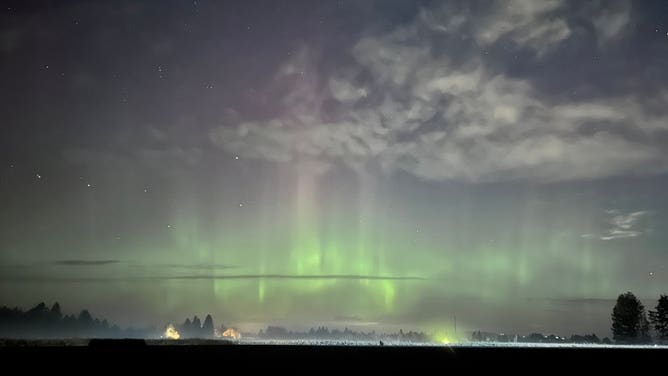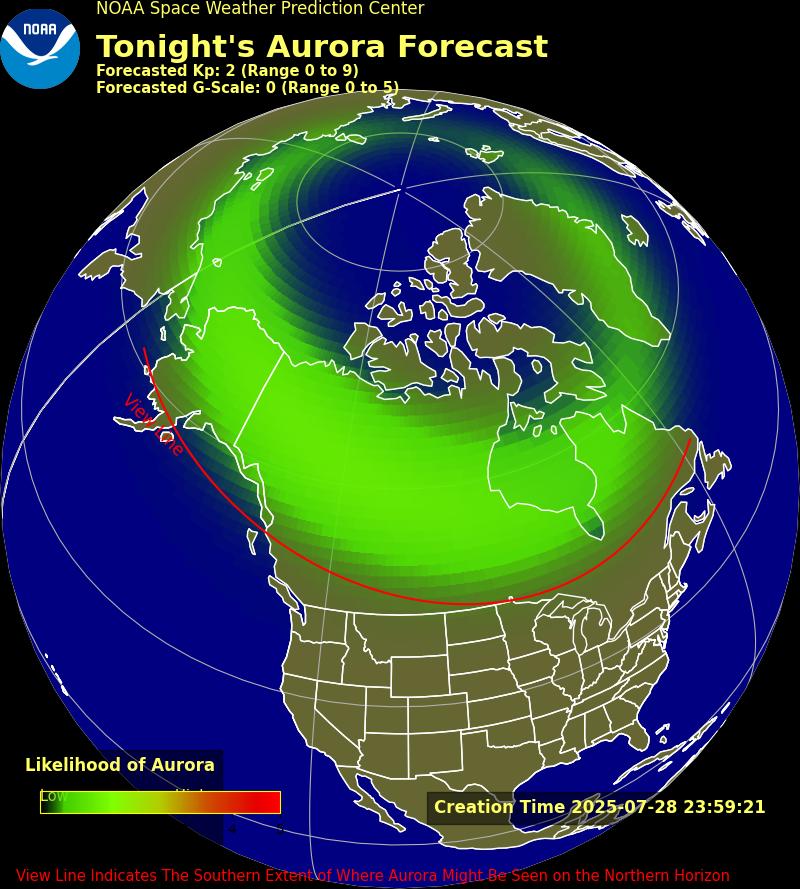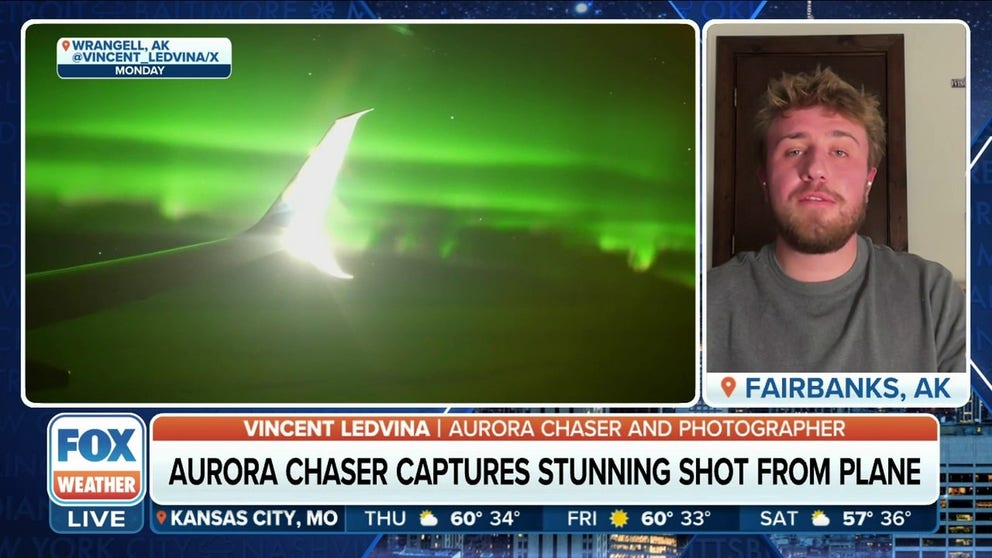Northern Lights could be visible across more of US on Saturday night
The aurora forecast from NOAA's Space Weather Prediction Center shows the southern extent of the Northern Lights stretching from northern Oregon to central Iowa to the southern tier of New York.
Aurora chaser captures stunning photo of Northern Lights from a plane
The vast wilderness of Alaska helped to create great viewing of the Northern Lights.
More of the northern U.S. could have a better chance of seeing the Northern Lights this weekend as another solar storm impacts Earth.
NOAA's Space Weather Prediction Center (SWPC) issued a Level G2 Geomagnetic Storm Watch for Saturday and Sunday, noting that a coronal mass ejection (CME) should arrive at Earth about 1 p.m. EST Saturday. A CME is a large burst of plasma from the Sun’s corona.

Northern Lights shine over Spokane, Washington, in the morning of Nov. 6, 2023.
(National Weather Service, Spokane / NOAA)
A G2-level storm can cause problems for high-latitude power systems, can require course corrections for objects orbiting the planet and create problems with high-frequency radio waves.
This level of storm can also lead to the Aurora Borealis, commonly called the Northern Lights, being visible farther south in the U.S. than usual.
The aurora forecast from the SWPC shows the southern extent of the lights stretching from northern Oregon to central Iowa to the southern tier of New York.
7 THINGS TO KNOW ABOUT THE NORTHERN LIGHTS

(SWPC)
Experts said people should get as far away from city lights as possible to get the best view of the Northern Lights.
This appears to be the third geomagnetic storm to hit Earth this week.
The Sun’s activity has been increasing as it approaches the Solar Maximum of its 11-year solar cycle, which should peak sometime next year.
